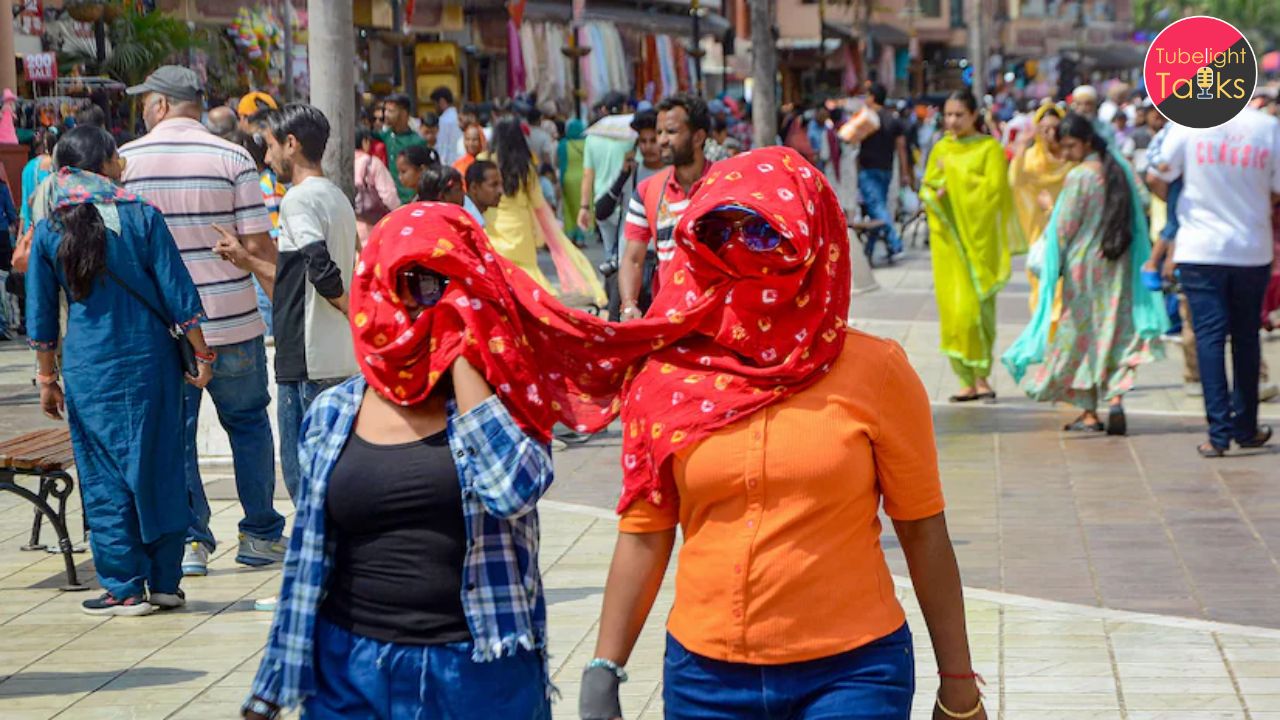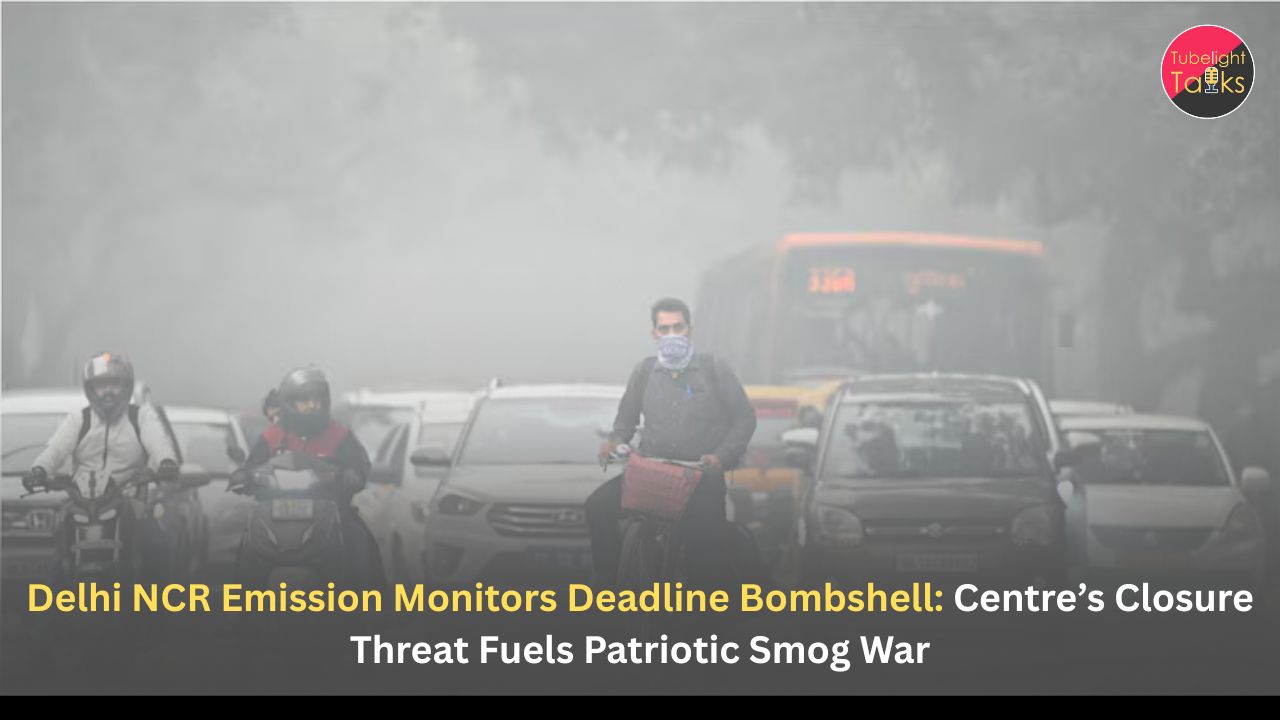A brutal heatwave has gripped parts of India already weakened by floods and cyclones earlier this year. With temperatures soaring above 45°C in several states, health systems, agriculture, and infrastructure are under immense pressure.
Highlights of India’s Heatwave 2025
- Bihar, Odisha, and Uttar Pradesh record 45°C+ temperatures
- Flood-hit regions now battling extreme heat and water scarcity
- Spike in heatstroke cases across government hospitals
- Power outages due to overwhelming demand
- Crop stress and early harvest losses reported
- SatGyan predicted heat zones ahead of the outbreak
India is vulnerable to climate crisis
- India is in the grip of a climate crisis as a severe heatwave strikes regions already impacted by earlier natural disasters in 2025. States such as Bihar, Odisha, Uttar Pradesh, and parts of Madhya Pradesh are experiencing some of the highest temperatures in recent years, surpassing 45°C in many cities.
- Hospitals are on high alert with hundreds of reported cases of heatstroke, especially among the elderly and children. Schools have been temporarily shut down in some districts, while water scarcity is emerging as a new concern in areas already affected by flooding just months ago.
- The agriculture sector is feeling the heat too. Paddy and wheat crops planted in low-lying areas are now under stress, with early harvest failures being reported. Farmers are demanding urgent irrigation support and insurance coverage.
- Climate experts point out that this compounding weather pattern—floods followed by heatwaves—is a direct consequence of global warming. India’s Meteorological Department links the current heatwave to both climate change and intensified El Niño effects this year.
What is El Niño?
El Niño is a natural climate phenomenon that occurs when the surface waters of the central and eastern Pacific Ocean become unusually warm. This shift disrupts global weather patterns and can have serious effects on various regions around the world.
Effects of El Niño:
1. In India:
- Weaker monsoon – Less rainfall, leading to droughts
- Higher temperatures – Increased chances of heatwaves
- Agricultural impact – Reduced crop yields, especially for rice and pulses
2. Globally:
- Heavy rains and floods in parts of South America
- Severe droughts in Australia and Indonesia
- Unpredictable rainfall patterns in Africa – flooding in some areas, drought in others
- Warmer and drier winters in parts of North America
How El Niño works:
- Normally, trade winds push warm ocean water toward Asia.
- During El Niño, these winds weaken or reverse direction.
- This causes the warm water to shift toward the Americas.
The result? Disruption of the global atmospheric circulation—changing rainfall, temperature, and storm patterns across continents.
Duration of El Niño:
- Typically occurs every 2 to 7 years
- Lasts for 9 to 12 months, sometimes longer
Heatwave of 2025 scorches flood-affected states: Crisis deepens
1. Scorching heat: First floods, now heatwave
The heatwave of 2025 has targeted those parts of the country which had already grappled with floods, cyclones and other disasters. Now these states are facing a second consecutive climate disastheatwavell
2. Affected states: Where is the situation the worst
- Bihar: 46°C temperature, water crisis and school closures
- Uttar Pradesh: Heatwave wreaks havoc from Bundelkhand to eastern UP
- Odisha: Power cuts and dry cracks in fields
- Jharkhand: Water and health crisis in tribal areas
- Madhya Pradesh: Crops scorched in rural areas, public life affected
3. Impact on health: Fear of heatwave and deaths due to heat
Cases of heat stroke are continuously increasing in government and private hospitals. The elderly, children and working people are the most affected. Reports of deaths have also come from many places.
4. Impact on agriculture: Drying fields and ruined crops
The few crops that were left after the last flood are now also getting scorched. Farmers now face a big challenge of irrigation and compensation.
5. Electricity and water crisis: Double whammy
The demand for electricity is at its peak, but the supply is getting disrupted. Also, the problem of water has arisen due to the decrease in the water level of rivers, ponds and hand pumps.
National Health Mission – Summer Health Safety Guidelines (2025)
Objective:
To protect individuals from heat-related illnesses such as heatstroke, dehydration, and sunburn during the summer seassion.
Key Tips to Stay Healthy in Summer:
1. Stay Hydrated
- Drink at least 8–10 glasses of water daily.
- Use Oral Rehydration Solution (ORS) to prevent dehydration.
- Avoid caffeinated drinks and alcohol.
2. Avoid Direct Sunlight
- Stay indoors between 11 AM and 4 PM when the sun is strongest.
- Use umbrellas, hats, scarves, and sunglasses when stepping outside.
- Wear light-colored, loose, and cotton clothes.
3. Eat Light and Cool Foods
- Include seasonal fruits like watermelon, cucumber, and mango (with water) in your diet.
- Avoid fried, spicy, and heavy meals.
4. Keep Your Home and Workplace Cool
- Use fans, coolers, or air conditioners.
- Cover windows with curtains or hang wet cloths to reduce indoor heat.
5. Special Care for Children, Elderly, and the Sick
- Keep them out of direct sunlight.
- Offer water at regular intervals.
- Consult a doctor immediately if symptoms appears
Watch Out for These Symptoms:
- Heavy sweating or no sweating at all
- Muscle cramps
- Dizziness or vomiting
- High fever
- Loss of consciousness
- Provide first aid and seek medical help immediately if any of these signs appear.
From Floods to Heatwaves: A Call for Divine Guidance
The ongoing heatwave in India, following months of devastating floods, is a stark reminder of the fragile state of our environment and the urgent need for spiritual and moral awakening.
According to the sacred knowledge given by Sant Rampal Ji Maharaj, the root cause of such natural calamities lies not only in environmental mismanagement but also in humanity’s disconnection from true worship and righteous living. Sant Rampal Ji Maharaj teaches that by adopting the path of true devotion as prescribed in the holy scriptures, mankind can receive divine protection even amidst extreme adversities. Just as plants flourish under the right environment, human life can also be safeguarded if aligned with God’s constitution.
The teachings of Sant Rampal Ji Maharaj not only guide us towards spiritual upliftment but also offer real solutions to restore balance in nature. It’s time for humanity to awaken and embrace the path shown by the Supreme God Kabir Sahib for a safer, sustainable, and disaster-free world.
FAQs on India’s Heatwave 2025
Q1. Which Indian states are most affected by the 2025 heatwave?
Bihar, Odisha, Uttar Pradesh, and parts of Madhya Pradesh are reporting the highest temperatures and heat-related emergencies.
Q2. Why is this heatwave more dangerous?
The affected regions were already struggling to recover from floods and storms earlier in the year, making them more vulnerable to heat stress and water shortages.
Q3. What measures are being taken by the government?
Emergency heat shelters, drinking water stations, mobile health units, and school closures have been implemented in critical zones.
Q4. How can people protect themselves during this heatwave?
Stay indoors between 12–4 PM, drink plenty of fluids, avoid outdoor work, wear light cotton clothes, and check on vulnerable neighbors.










